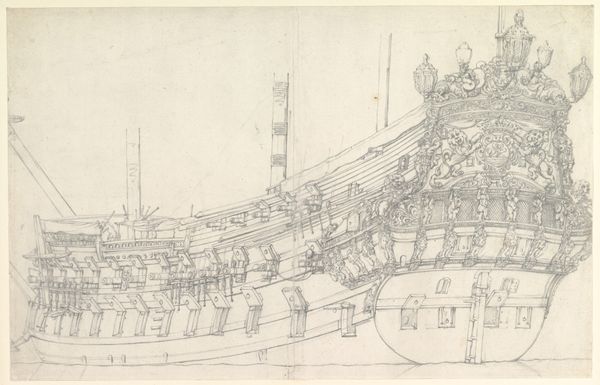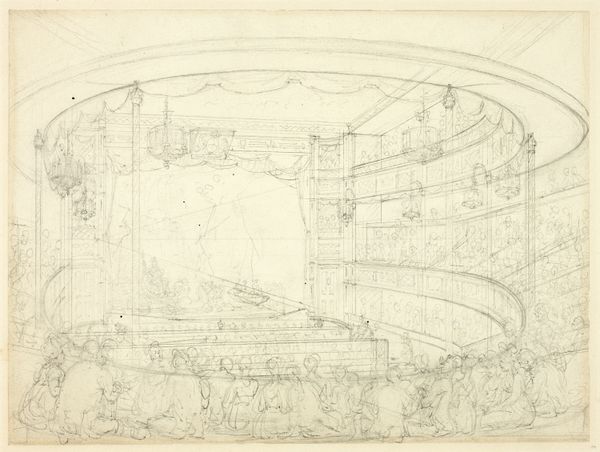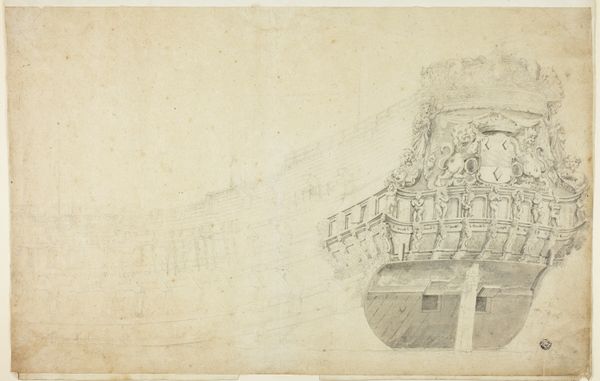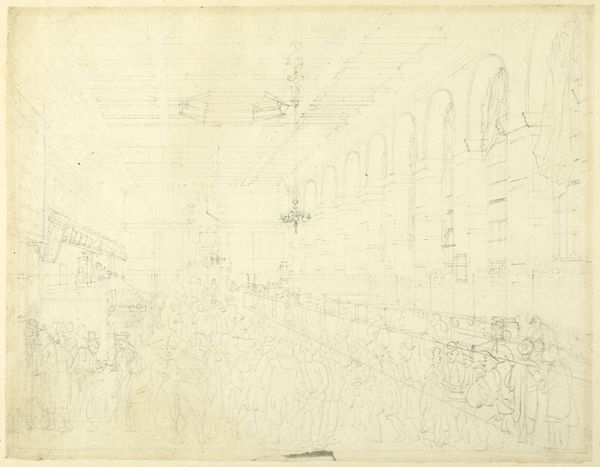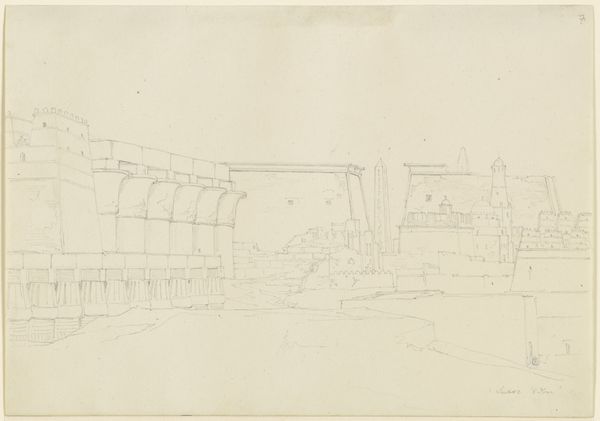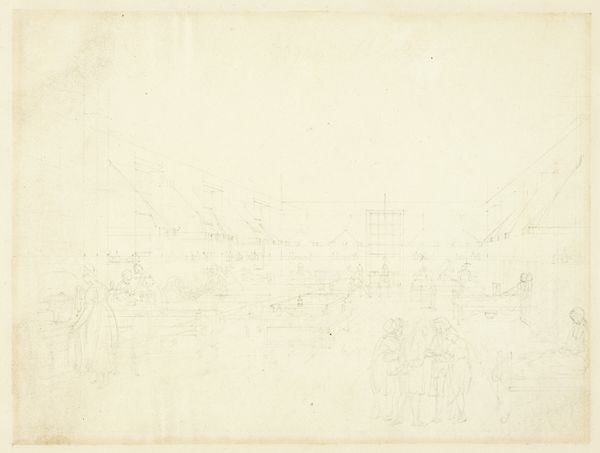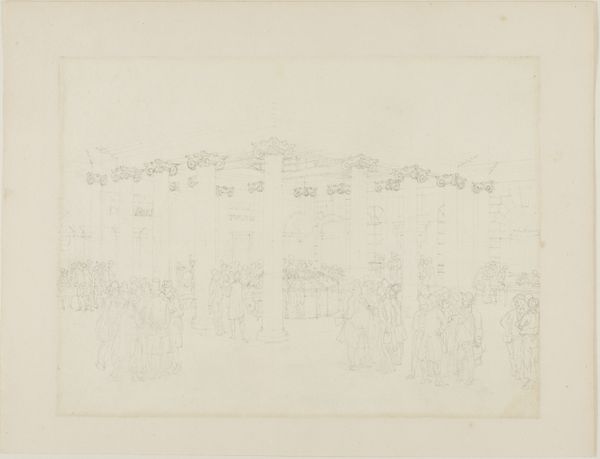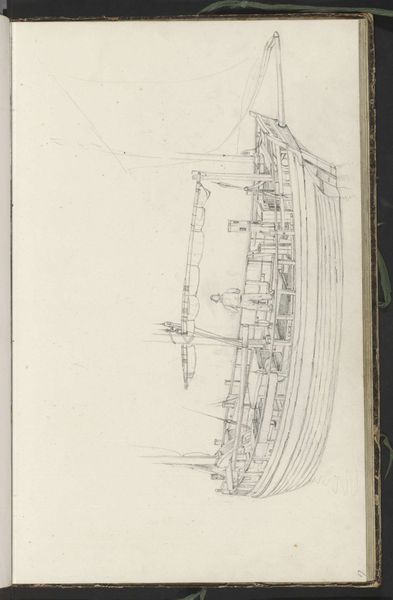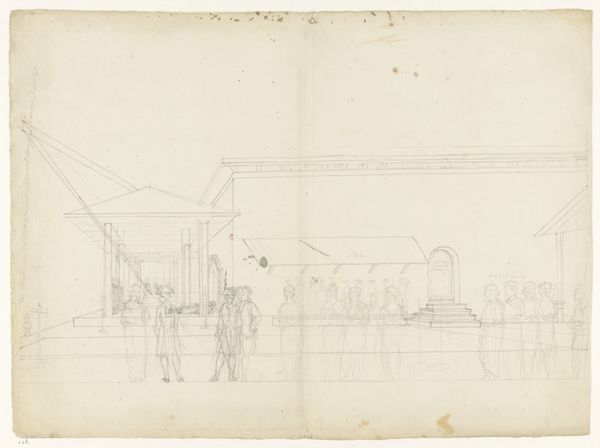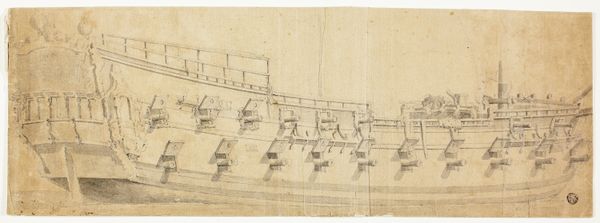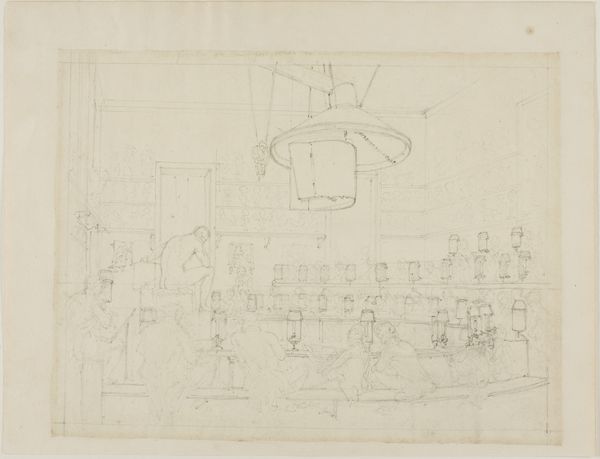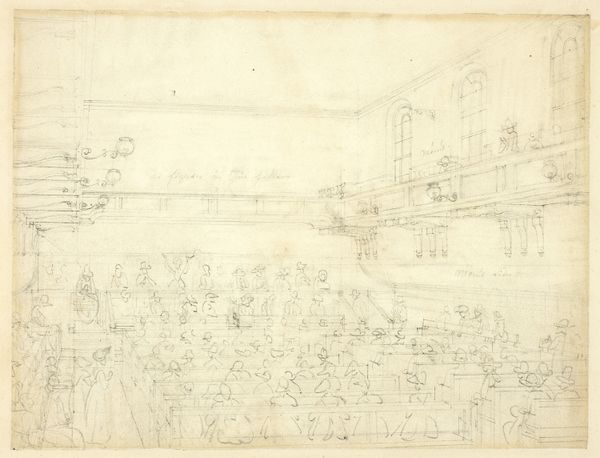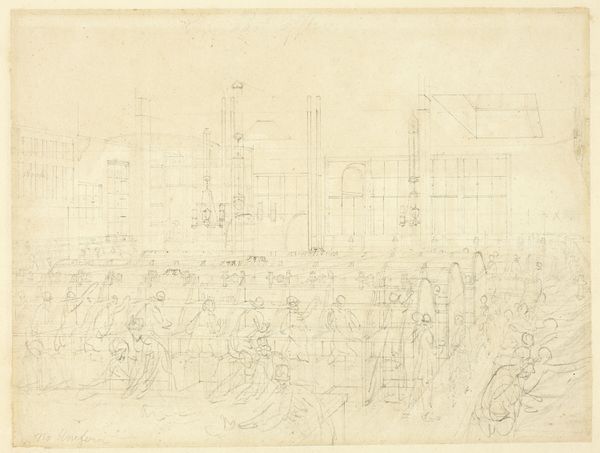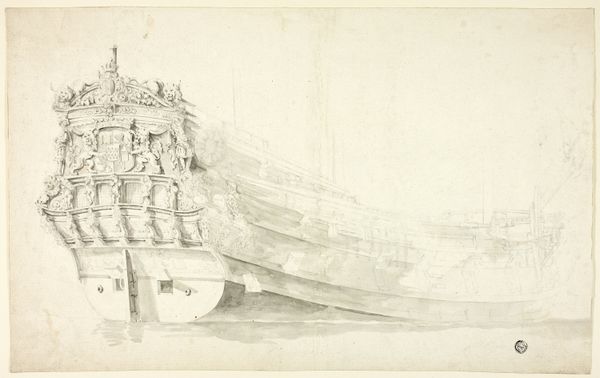
drawing, pencil
#
drawing
#
baroque
#
landscape
#
pencil
#
genre-painting
#
history-painting
Dimensions: height 310 mm, width 625 mm
Copyright: Rijks Museum: Open Domain
Curator: Ah, the meticulous lines of Willem van de Velde the Elder! This drawing, "The English First Rate ship Prince," probably dates from sometime between 1670 and 1693. It's just a pencil drawing, but the detail is astounding. Editor: My first impression is the sheer quiet power emanating from this seemingly simple drawing. It feels like a ghost ship, a vessel laden with untold histories, silent witness to forgotten voyages. Curator: Absolutely! You get a sense of immense size despite it being just a study, right? And van de Velde really understood ships. He started as a draughtsman and essentially became a war artist, documenting naval battles. It's quite astonishing when you consider the politics surrounding this work, capturing these grand symbols of imperial power so intimately. Editor: It's precisely that intimacy that captivates me. In a time of naval conflicts and colonial expansion, this detailed portrayal offers a glimpse into the technological marvels that enabled such exploitation and, thinking about it, it becomes evident how this vessel played a vital role in global power dynamics during the late 17th century. It’s a beautiful and troubling paradox. Curator: Troubling, yes, but undeniably beautiful. Look at the baroque flourishes on the stern. All those ornate carvings! Van de Velde clearly appreciated the craftsmanship even if he didn’t necessarily endorse the cause the ship represented. It makes me wonder what the working conditions were for the artists and craftsmen whose skills shaped those beautiful yet complex symbols of state and trade. Editor: It's the inherent contradictions, isn't it? High art meets brutal power, rendered in delicate pencil strokes. It invites us to see beyond the surface, beyond the mere depiction of a ship, and to contemplate the complex web of social, political, and economic forces that propelled its existence. Van de Velde documented something truly central to a particular cultural period, capturing the intricate craftsmanship as much as he revealed the means for so much expansionism and colonization. It’s no accident that this work lives at the Rijksmuseum. Curator: In this small, grey work on paper we find beauty that both impresses and haunts! Editor: A subtle ghost in pencil that keeps raising questions about the power we can and must witness even within images of seemingly 'simple' beauty.
Comments
No comments
Be the first to comment and join the conversation on the ultimate creative platform.
